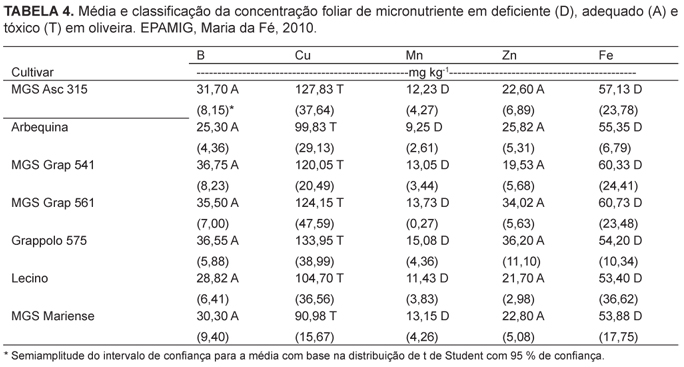This study aimed to quantify the mineral composition of olive leaves to diagnose nutritional status of plants grown in conventional system. The experiment was conducted with seven cultivars: Arbequina, MGS Asc 315, MGS Mariense, MGS Grap 541, MGS Grap 561, Grappolo 575 and Leccino, in a randomized block design with four replications and five plants perplot. In May 2010, we collected 60 leaves for each cultivar (12 per plant),whichwere dried and subsequently analyzed. The results advert to the high levels of Cu, a consequence of the excessive use of fungicides based on copper oxychloride and Bordeaux mixture in the orchards. The high concentration of this element in the leaves can bephytotoxicity to plants and harmful to human health, since the leaves are used popularly as an aid in procedures for weight loss. Thus, we suggest the rational use of fertilizers and pesticides in the cultivation of olive trees to prevent nutritional deficiency or phytotoxicity and, if the research acknowledges the phytotherapic effect of leaves, the adoption of crops in the differentiated system of production, to obtain raw material with good quality and suitable for consumption in natura.
mineral nutrition; toxicity; mineral deficiency




